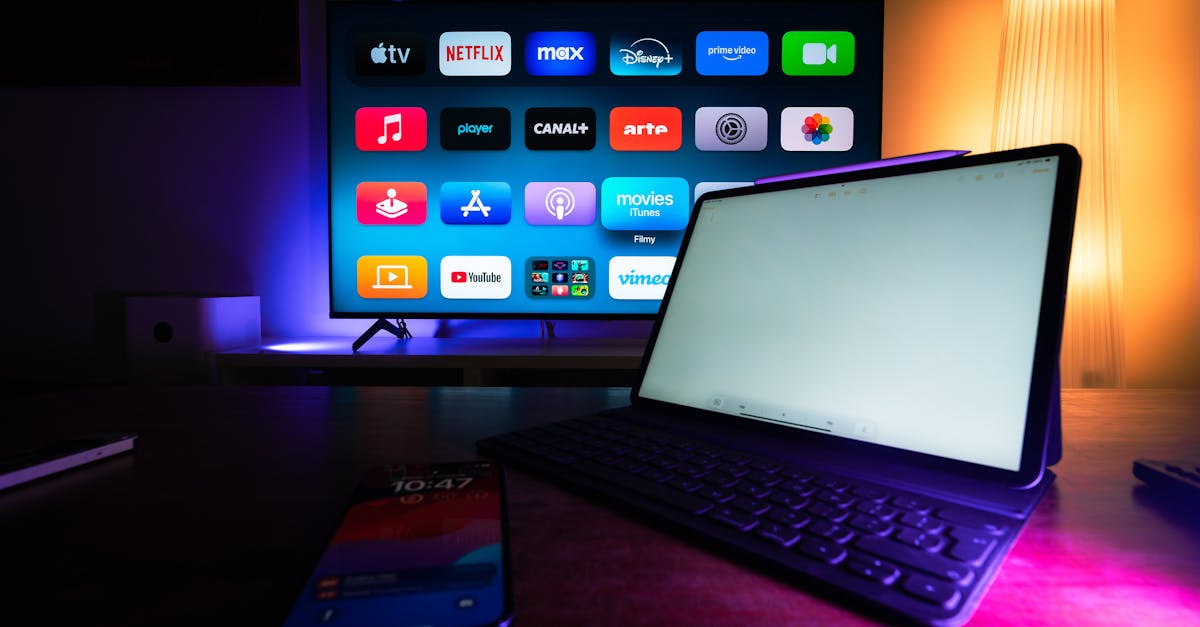Streaming Wars Who is Leading the Battle for Viewership
Introduction
The age of streaming has forever changed how we consume television and films, offering convenience, variety, and, most importantly, choice. Over the past few years, a heated battle has emerged among streaming giants, each vying to capture and maintain the attention of viewers worldwide. Dubbed the "Streaming Wars," this competition endlessly evolves as platforms innovate and expand their content libraries. Giants like Netflix, Amazon Prime Video, Disney+, and newcomers such as HBO Max and Apple TV+ are at the forefront. Given varying subscription models, exclusive content, and user experience, which service truly reigns supreme? This article delves into these platforms, exploring their strategies and predicting who might emerge victorious.
Advertisement
Netflix The Early Pioneer
Netflix essentially pioneered the streaming industry, debuting its service over a decade ago. Launching flagship original content like 'House of Cards' and 'Stranger Things,' it proved that streaming was more than just a repository for existing movies and TV shows. Although Netflix enjoys immense popularity, recent challenges have included increased subscription prices and loss of certain content due to tighter competition. With a strong global presence in over 190 countries, it still boasts the largest user base. Its innovative recommendation algorithm and ability to create international hits, such as 'Squid Game' and 'Money Heist,' further underscore its influence.

Mikhail Nilov/Pexels
Advertisement
Disney+ The New Powerhouse
When Disney+ launched in 2019, many saw it as an immediate threat to Netflix’s dominance. Touting an impressive back catalogue and beloved franchises like Star Wars and Marvel, Disney+ rapidly expanded its global reach. Additionally, successful original series like 'The Mandalorian' have only heightened its appeal. With its acquisition of 21st Century Fox, Disney+ gained Even more content, solidifying its status as a premium family-friendly platform. Competitive pricing strategies and bundling options with Hulu and ESPN+ have broadened subscriber appeal, shaping Disney+ as a rising juggernaut in the streaming space.
Advertisement
Amazon Prime Video Weight of a Giant
Amazon Prime Video is part of a larger suite offered with Amazon Prime. With a wide-ranging selection of films, TV series, and critically acclaimed originals like 'The Marvelous Mrs. Maisel' and 'The Boys,' it is a strong competitor. Its reach is amplified by Amazon's distribution network and diverse services. Regularly purchasing rights for live sports, such as NFL games, further differentiates its content offering. However, its user interface and content discovery mechanics have sometimes been criticized as less intuitive when compared to rivals. Despite this, it maintains a solid place in the marketplace due to its multifaceted branding.
Advertisement
HBO Max Historical Strengths and Modern Challenges
Home to iconic series such as 'Game of Thrones' and 'The Sopranos,' HBO Max blends the prestige and heritage of traditional HBO with a robust library that includes Warner Bros. films. Launching in 2020, it marketed an extensive catalogue that made headlines with same-day theater and streaming releases of major films. Targeting a premium audience, HBO Max's cost is on the higher end, with a user experience tailored to a more a mature audience. This positioning may limit its growth among diverse demographics, but its reputation for quality continues to attract subscribers seeking sophisticated narratives.
Advertisement
Apple TV+ Focus on Quality over Quantity
Apple TV+ has carved a niche by positioning itself as a boutique service that emphasizes quality original programming. With acclaimed series such as 'The Morning Show' and 'Ted Lasso,' it foregoes a vast content library in favor of distinguished titles. Apple’s platform focuses on artistic credits and renowned creators, offering a unique experience. Its integration with Apple devices enhances user convenience, syncing seamlessly with the Apple ecosystem. While initially having a quieter start, Apple TV+ remains a potent contender, benefiting from Apple's powerful brand recognition.
Advertisement
Paramount+ and Peacock Newcomers Shaking Up the Scene
Both Paramount+ and Peacock entered the streaming wars to leverage extensive content histories with CBS and NBC, respectively. Offering a mix of sports broadcasts, news programs, and entertainment, these platforms fulfill varied consumer needs. Peacock provides a unique benefit with its free tier, attracting casual viewers. Paramount+ capitalizes on franchises such as 'Star Trek' and 'SpongeBob SquarePants,' appealing to niche but devoted audiences. Although possessing potent libraries, their newer presence means they must compete proactively to carve sustainable market shares.
Advertisement
The Influence of Global Markets
As platforms expand globally, the incorporation of localized content becomes essential. Netflix, Amazon Prime, and Disney+ are prominent in international markets, creating or acquiring region-specific productions to cater to diverse audiences. Emerging economies provide fresh opportunities but also cultural and regulatory challenges. Competitive pricing and regional partnerships further determine success outside traditional Western markets. Thusly, understanding and catering to local tastes are critical components of any strategy aiming for worldwide streaming supremacy.
Advertisement
Technological Innovations and Consumer Trends
Technology plays an integral role in shaping the streaming landscape. With the advent of artificial intelligence, platforms can better tailor user experiences. Additionally, advancements in 4K, HDR, and Dolby sound have enhanced viewing atmospheres. As consumers increasingly demand personalization and interactivity, some platforms explore experimental formats—like interactive narratives—to captivate users. Mobile viewing, particularly in younger demographics, shows significant growth, influencing multi-device content adaptability. In this evolving space, seizing technological opportunities is vital for platforms to maintain their competitive edge.
Advertisement
Conclusion
The streaming wars continue unabated, defined by innovation, pricing strategy, content diversity, and global outreach. With multiple contenders boasting unique strengths, the "winner" of these wars is not necessarily singular. Rather, viewers as a whole emerge victorious from the abundance of choices unrestrained by traditional cable models. The future of streaming will hinge on creating compelling content that resonates across varied viewer landscapes. In this continuously evolving digital age, the battle for viewer loyalty highlights the importance of dynamic, consumer-driven adaptability.
Advertisement








